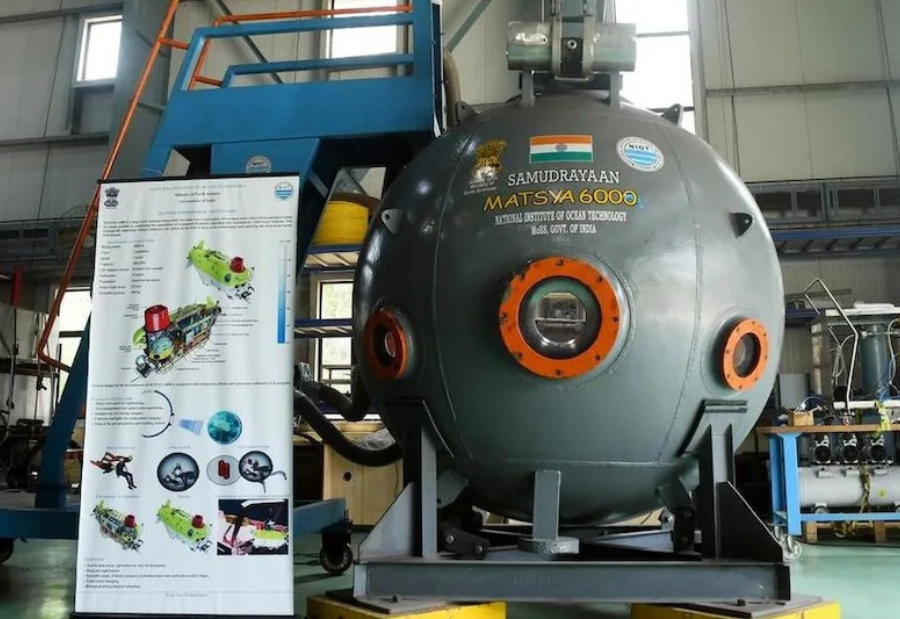India is preparing to venture where few have dared — into the mysterious silence of the deep sea. A historic journey is taking shape, one that will carry Indian scientists 6000 metres below the surface of the ocean. This mission, called Samudrayaan, promises to position India among the select few nations that have ever sent humans to such profound underwater depths.
At the centre of this grand pursuit lies Matsya, a majestic 25-tonne submersible built entirely with Indian knowledge and engineering. Crafted with a robust titanium shell, it has been designed to survive the crushing pressures and chilling darkness of the deep sea. Matsya will carry three explorers on a journey that blends science, courage, and innovation.
The project is currently undergoing trials, with a 500 metre test dive planned before the year ends. The ultimate dive to 6000 metres will unfold step by step. Each full mission will last around eight hours — a four hour descent and an equal rise back to the surface.
Matsya is no ordinary machine. Its spherical cabin, just over two metres wide, is built from titanium alloy and designed to keep the inside pressure stable, even while withstanding over 600 times the atmospheric pressure experienced on land. In fact, the shell has been tested to endure up to 720 bars — far above the expected maximum.
Safety is the soul of this expedition. Matsya is equipped with a Human Support and Safety System approved by DNV, keeping oxygen levels at 20 percent and carbon dioxide within safe limits. It is built for 12 hours of underwater operation and has the capacity to sustain life for up to 96 hours in emergencies.
Communication is another key feature. Matsya uses an Underwater Acoustic Telephone tested to function up to 10000 metres, ensuring constant contact with the Mission Control Centre onboard the support ship. A secondary communication device provides backup for shallower zones.
Engineered to float by default, Matsya only dives when its ballast tanks are filled. To return to the surface, it uses three weight-release mechanisms, along with backup systems for power, control, and communication.
India’s mission aims to uncover precious scientific data, marine biodiversity samples, and insights that could revolutionise ocean science, medicine, and climate research — quietly rewriting India’s legacy beneath the waves.
Also read: Viksit Workforce for a Viksit Bharat
Do Follow: The Mainstream formerly known as CIO News LinkedIn Account | The Mainstream formerly known as CIO News Facebook | The Mainstream formerly known as CIO News Youtube | The Mainstream formerly known as CIO News Twitter |The Mainstream formerly known as CIO News Whatsapp Channel | The Mainstream formerly known as CIO News Instagram
About us:
The Mainstream formerly known as CIO News is a premier platform dedicated to delivering latest news, updates, and insights from the tech industry. With its strong foundation of intellectual property and thought leadership, the platform is well-positioned to stay ahead of the curve and lead conversations about how technology shapes our world. From its early days as CIO News to its rebranding as The Mainstream on November 28, 2024, it has been expanding its global reach, targeting key markets in the Middle East & Africa, ASEAN, the USA, and the UK. The Mainstream is a vision to put technology at the center of every conversation, inspiring professionals and organizations to embrace the future of tech.




